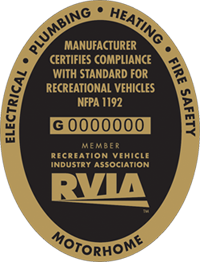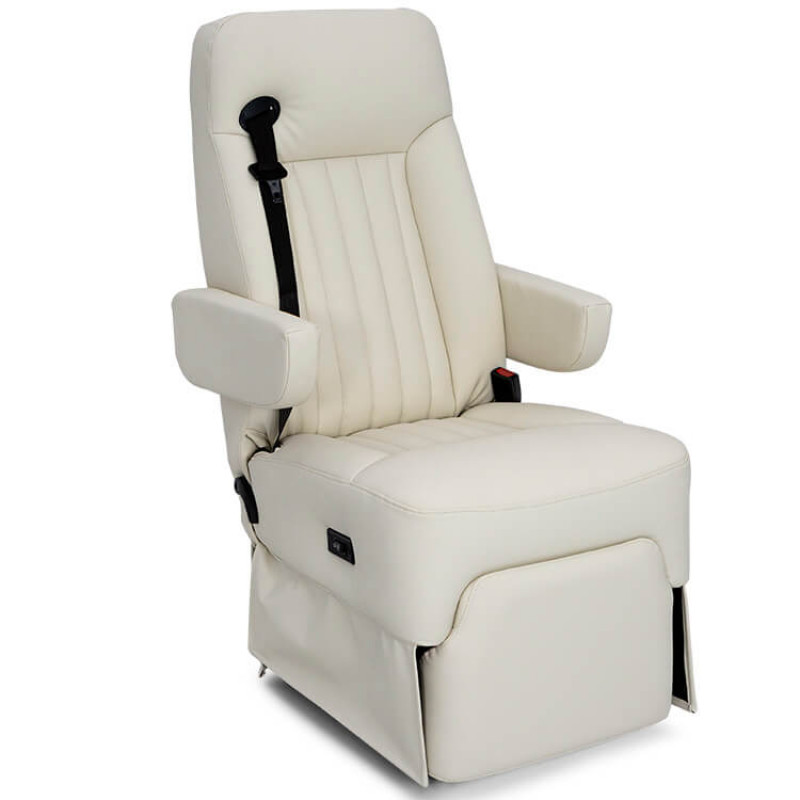Safety
Sportsmobile, like other reputable RV manufacturers, follows stringent safety protocols to ensure the safety of their vehicles. Here are some key aspects of manufacturing safety for Sportsmobile RVs:
RVIA is the benchmark for all safety compliance in our Industry. They conduct 9 yearly inspections to monitor all systems installed in the vans, including propane, 120 volt, plumbing, seat and safety equipment. This will ensure that every Sportsmobile is built to the most current and strict compliances to date. Sportsmobile has been a continuing member of RVIA for over 50 years.
The below label is attached to each Sportsmobile after the final inspections and systems testing is completed. It indicates that all RVIA codes and testing procedures have been followed.

Each Sportsmobile is certified with a label affixed to the driver’s door post, as complying with all applicable Federal Safety Standards.

The roof cutout is reinforced with specially fabricated 13 gauge structural steel members, bolted to the van’s roof. When the reinforced fiberglass top is locked down, the roof is further strengthened.
Constructed and installed per Federal Safety Standards.
All captain’s seats and forward facing outboard seats include 3-point seat belts. All other seats include a lap belt unless noted otherwise.
Cabinet material is ½” corelight plywood. It has high strength, lightweight, and is very durable. Sides are bolted down through the van’s steel floor using 8 to 12 special steel “L” plates. Cabinets are also secured to the van’s sides, and other appropriate points.
See chassis manufacturer owner’s manual for information on the van’s safety features.
For your safety…
WARNING – Vehicles with a higher center of gravity such as utility vehicles and vans handle differently than vehicles with a lower center of gravity. Utility vehicles and vans are not designed for cornering at high passenger car speeds, just as low-slung sports cars are not designed to perform satisfactorily under off-road conditions. Avoid sharp turns, excessive speed or abrupt maneuvers in utility vehicles and vans. Failure to drive cautiously could result in an increased risk of loss of vehicle control, vehicle rollover, personal injury, and death.
WARNING – Loaded vehicles, with a higher center of gravity, may handle differently than unloaded vehicles. Do not overload your vehicle. Carry heavy loads as low as possible.
WARNING – In a crash, an unbelted person is significantly more likely to be injured or die than a person wearing a seatbelt. All occupants must wear seat belts and children/infants must use appropriate restraints to minimize the risk of injury or ejection. It’s also the law.
WARNING – Driving under the influence of alcohol can lead to an accident. Your perceptions are less sharp, your reflexes are slower, and your judgment is impaired when you have been drinking.







